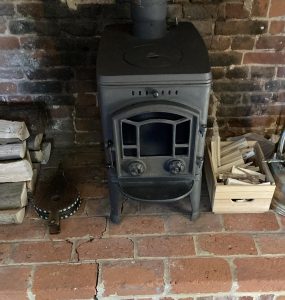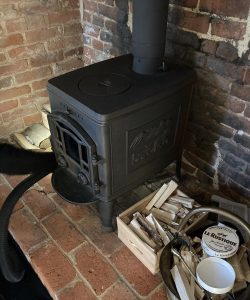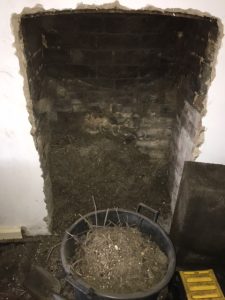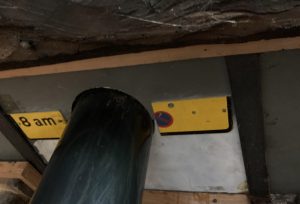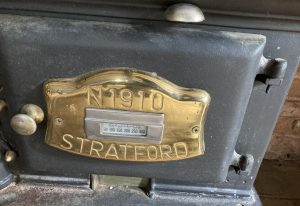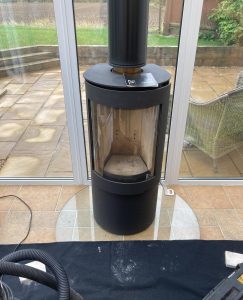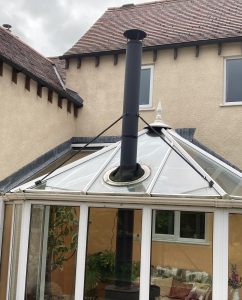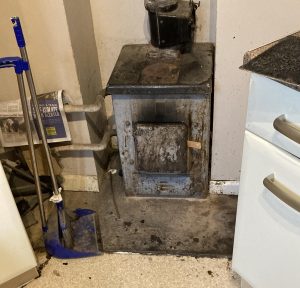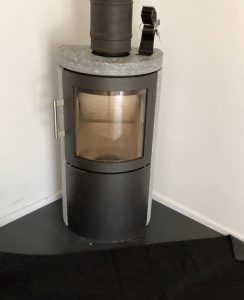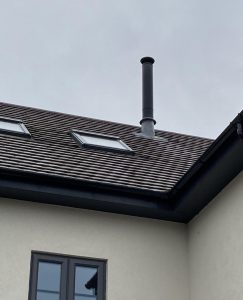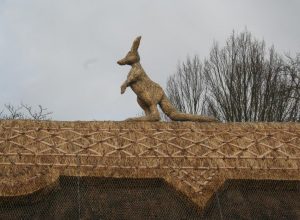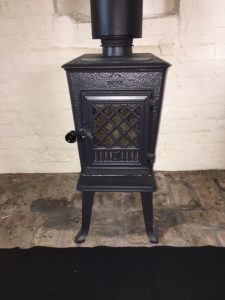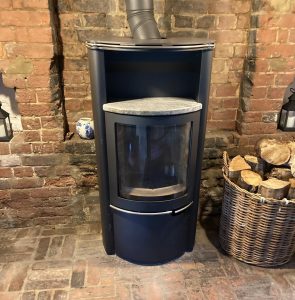
For this week’s blog I thought I would use this very attractive contemporary Scan 40 6Kw Wood-Burning stove I swept this week when I spent a day in Hertfordshire sweeping around the Pelhams.
I was quite taken with this stove, which although it very modern contemporary appearance, was located very effectively in an old, thatched cottage. The juxtaposition of old and very modern worked extremely well. I was however surprised to learn that the stove was only 6Kw rated, as it has quite a large firebox, that could take a significant quantity of fuel – Obviously this is somewhat deceptive.
Scan Stoves are a Danish company founded only in 1978. Scan pride themselves on there modern Scandinavian designs and recognizable ‘clean lines’. The company is now owned by the Norwegian stove company Jotul. Obviously Jotul have kept this brand because of their modern, contemporary designs. Whereas many Jotul designs have a very traditional or retro appearance. Clearly the Scan brand gives Jotul a much broader design appeal to a mass market – Jotul sell stoves all over the world.


 My name is Paddy McKeown, I am a retired police officer (Detective Sergeant – Metropolitan Police), turned chimney sweep. I have completed training with ‘The Guild of Master Chimney Sweeps’, and Rod Tech UK (Power Sweeping).
My name is Paddy McKeown, I am a retired police officer (Detective Sergeant – Metropolitan Police), turned chimney sweep. I have completed training with ‘The Guild of Master Chimney Sweeps’, and Rod Tech UK (Power Sweeping).
